On Tuesday I continued with the blueprints, this time working on making the characters heads follow the player! Firstly though, I realised that it would be easier to have each animation blueprint be a child of a single parent blueprint. The issue was... I was using two separate sets of bones: one for the original character model, and one for the updated tiger model. The parent and children all had to have the same set of bones, so, I decided to assign a new skeleton to the fisher character and retarget the animations (another new skill for the book I guess). I went onto each skeleton and used the retarget manager to set up a rig by assigning each bone to a source and a target, which was then replicated for the other set of bones:
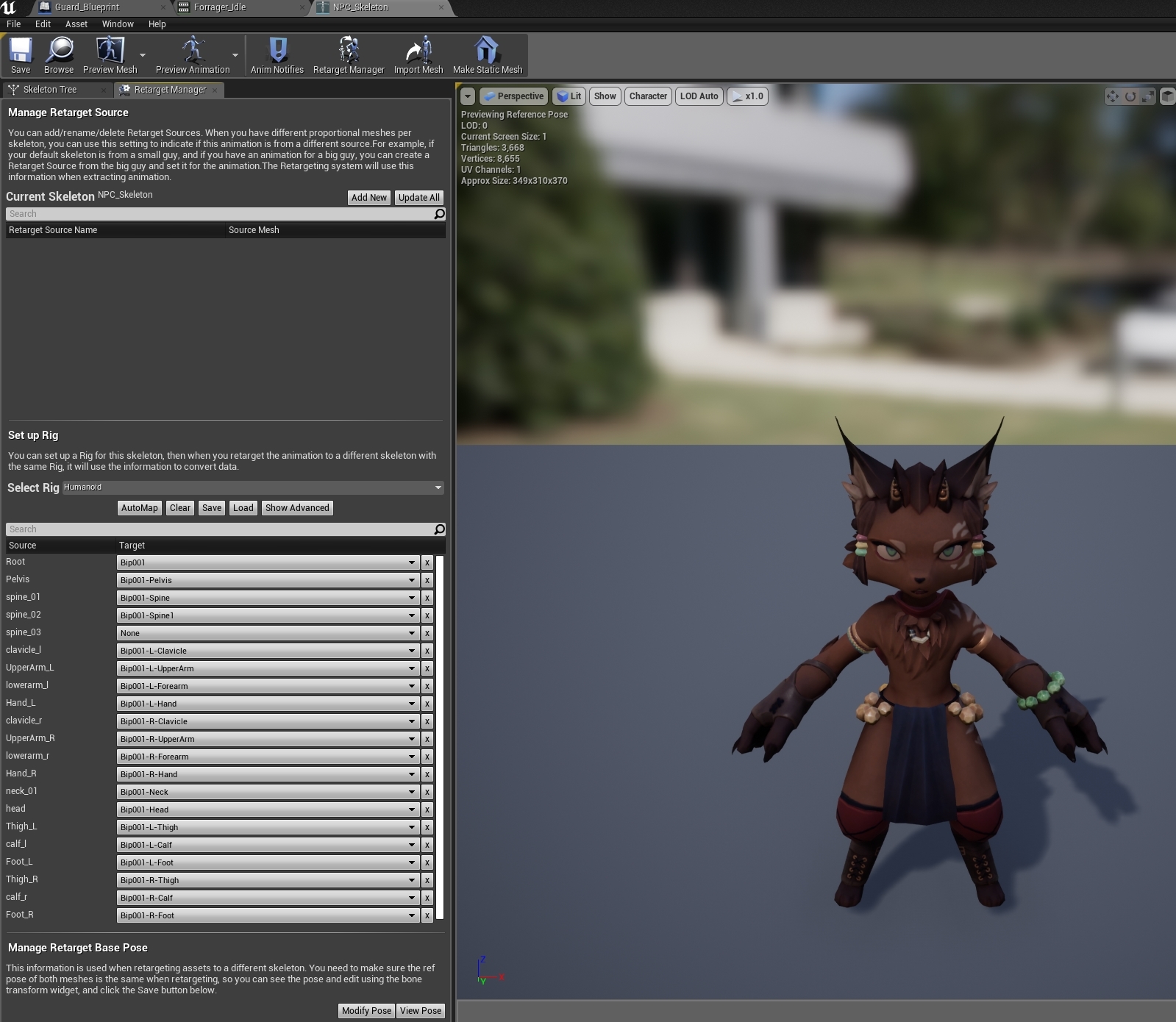 |
| I also went into the advanced list so I could set fingers and other extra bones |
I then right clicked on my animation asset for the tiger and clicked on retarget, selecting the NPC_Skeleton from the list of compatible skeletons, and went through with the change. There were some issues where different parts of the body became enlarged or stretched a little bit, but that was solved by going into the skeleton tree within the animation and showing the re-targeting options.
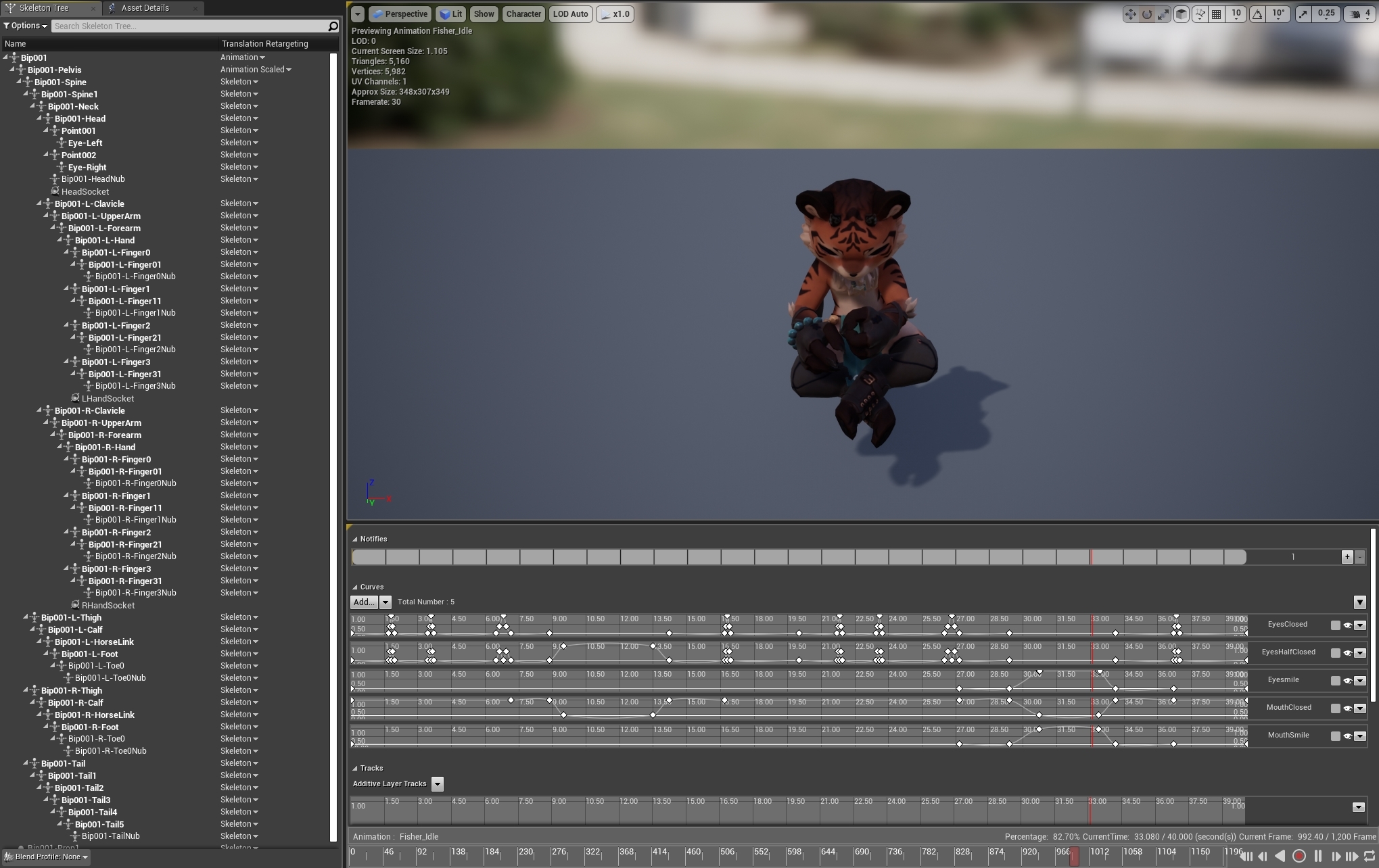 |
I changed everything to skeleton other than the Bip and the Pelvis,
which were set to animation and animation scaled respectively. |
All of this was done following these two tutorials
[link] [link].
After this was done, I started on the lookat blueprints using
this tutorial:
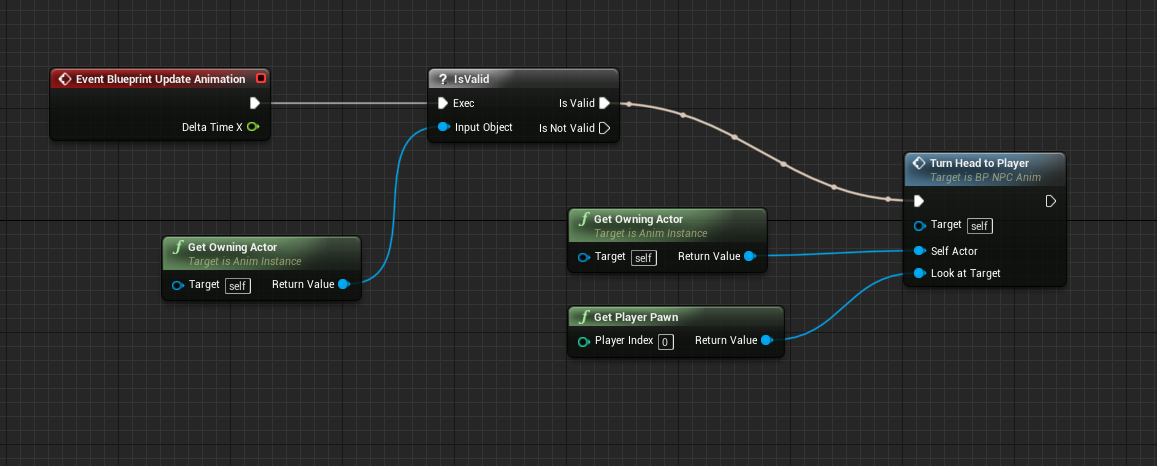 |
EventGraph: Checking if the owning actor is valid, and if so executes the
custom function setting the self actor as the owner, and the look at target as the player. |
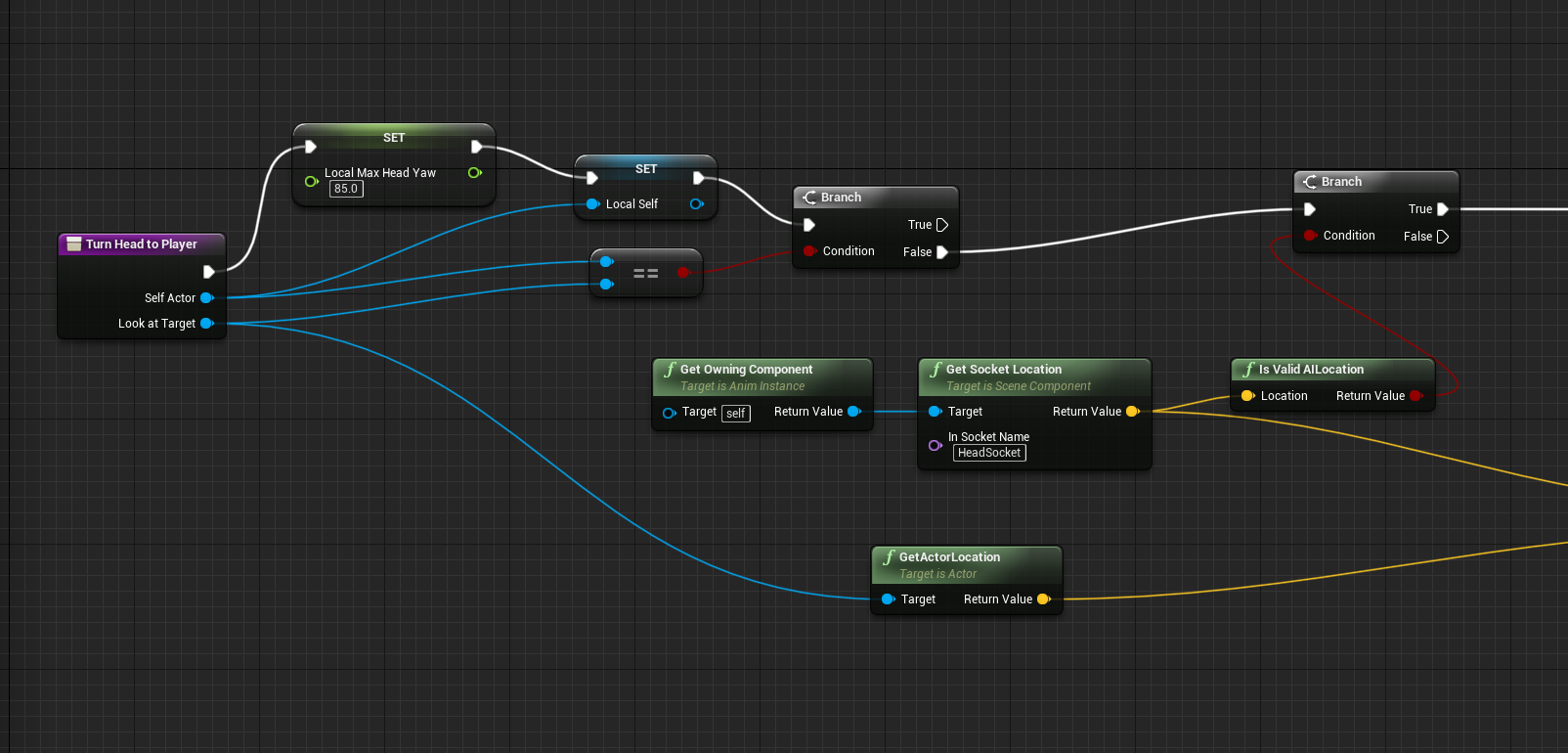 |
First section: setting the maximum amount of head turn (so necks don't snap),
setting itself as a variable and making sure it isn't the player character and the socket location is valid. |
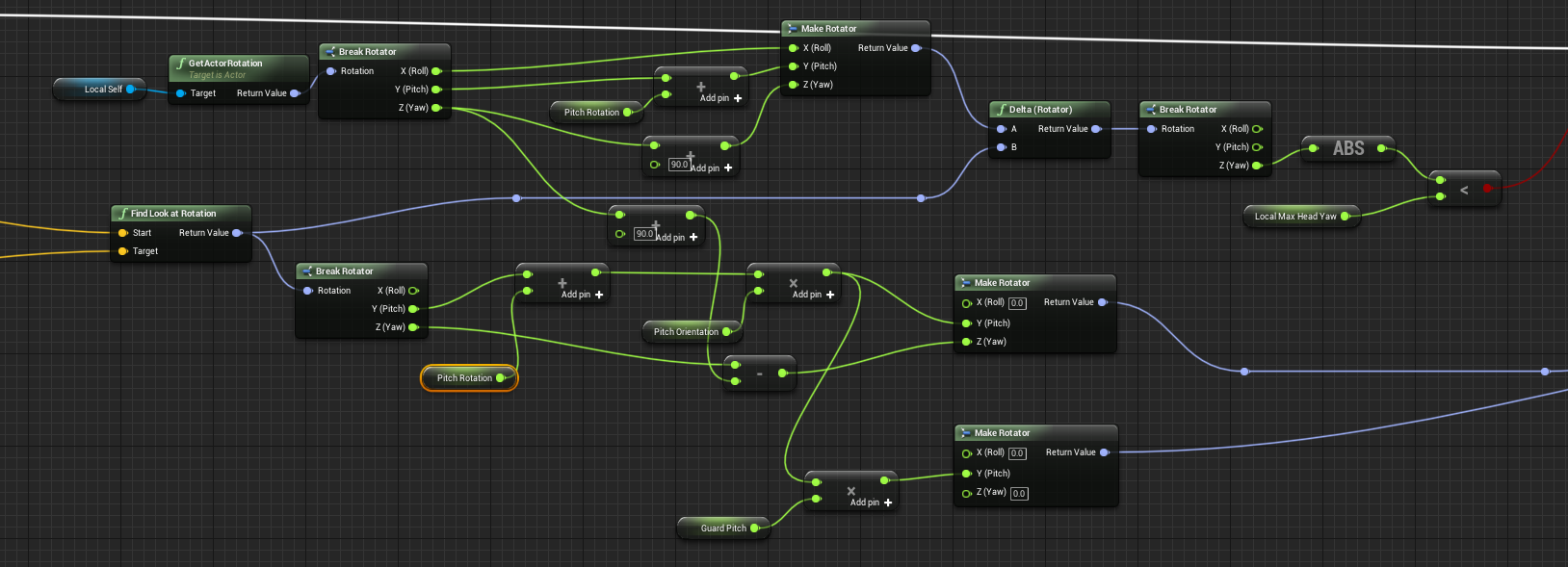 |
Second section: finding the target location, making a rotation to follow it for both the pitch and yaw of the head
as well as checking the rotation of the head against the maximum yaw. |
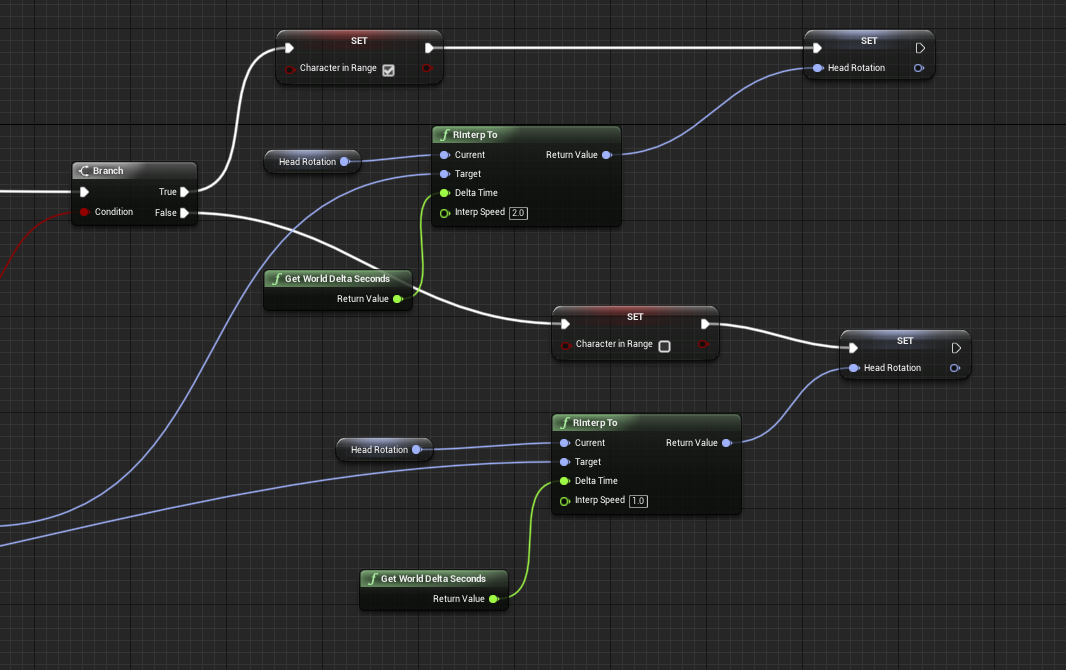 |
| Final section: if the rotation exceeds the maximum yaw, it resets the head rotation to the original one, if not, it continues to rotate. I also added some boolean variables here to check whether or not the player is in viewing range to turn off the animation when not in use. |
 |
| Animgraph showing final animation pose, where the alpha is whether or not the head is to move or not. |
 |
| Child blueprint that sets the alpha depending on whether or not the character is A: in the collision range of actor blueprint itself, and B: in range of the head turn. |








No comments:
Post a Comment